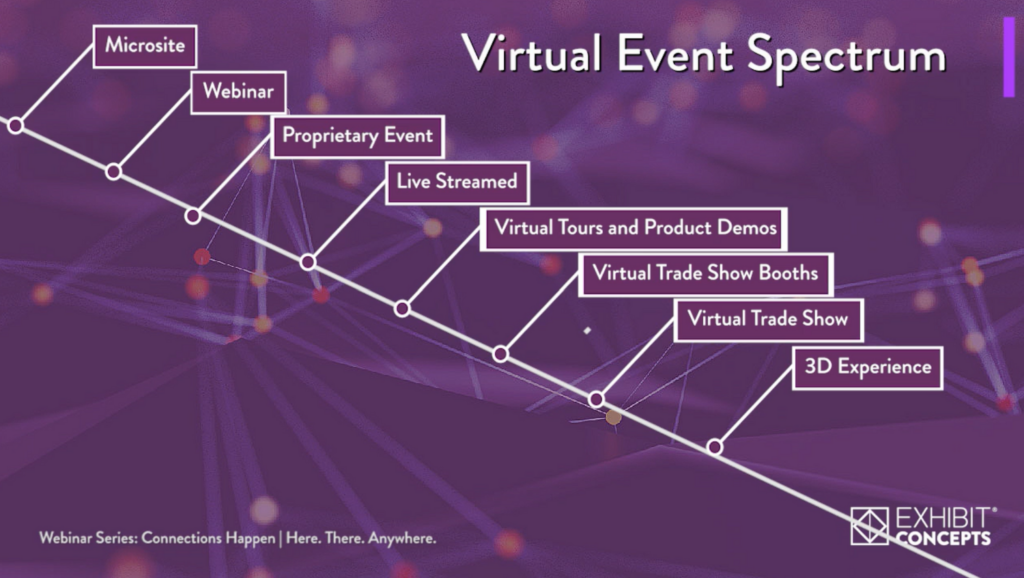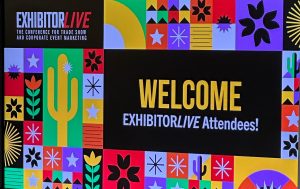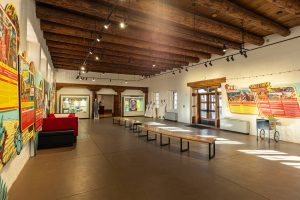One thing common among virtual events is that they take “place” online. After that, virtual and digital events cover a wide range of possibilities and formats, depending on your needs, objectives, audience and budget. The good news is that there is sure to be a virtual solution that fits your situation.
Microsite
At the most basic level, a virtual event could be a microsite with both static and dynamic posted to it. Examples of static content could be white papers, templates, or sales literature. Dynamic content could be product demonstration videos. This microsite becomes an “event” when you invite an audience to the site at a specific day and time when a salesperson or product manager is available for live chat or to answer questions in a video conference breakout room. Assuming the white paper or demonstration videos already exists, this option can be one of the least expensive and fastest to market.

Webinar
Another popular option is a live webinar. Like the name suggests, a webinar is a “seminar” that takes place on the web. You can use a webinar-specific platform such as GoToWebinar or Adobe Connect that offer a lot of ease-of-use features for speakers, administrators, and attendees as well as back-end metrics and analytics. Less expensive (and less feature rich) options would be your company’s video conferencing solution such as Webex or Zoom. Typically, the webinar will last less than one hour, be focused on one topic, have a speaker or panel, and include slides or other supporting visuals. In most cases, the audiences’ audio and video are muted and they submit questions through a chat feature.
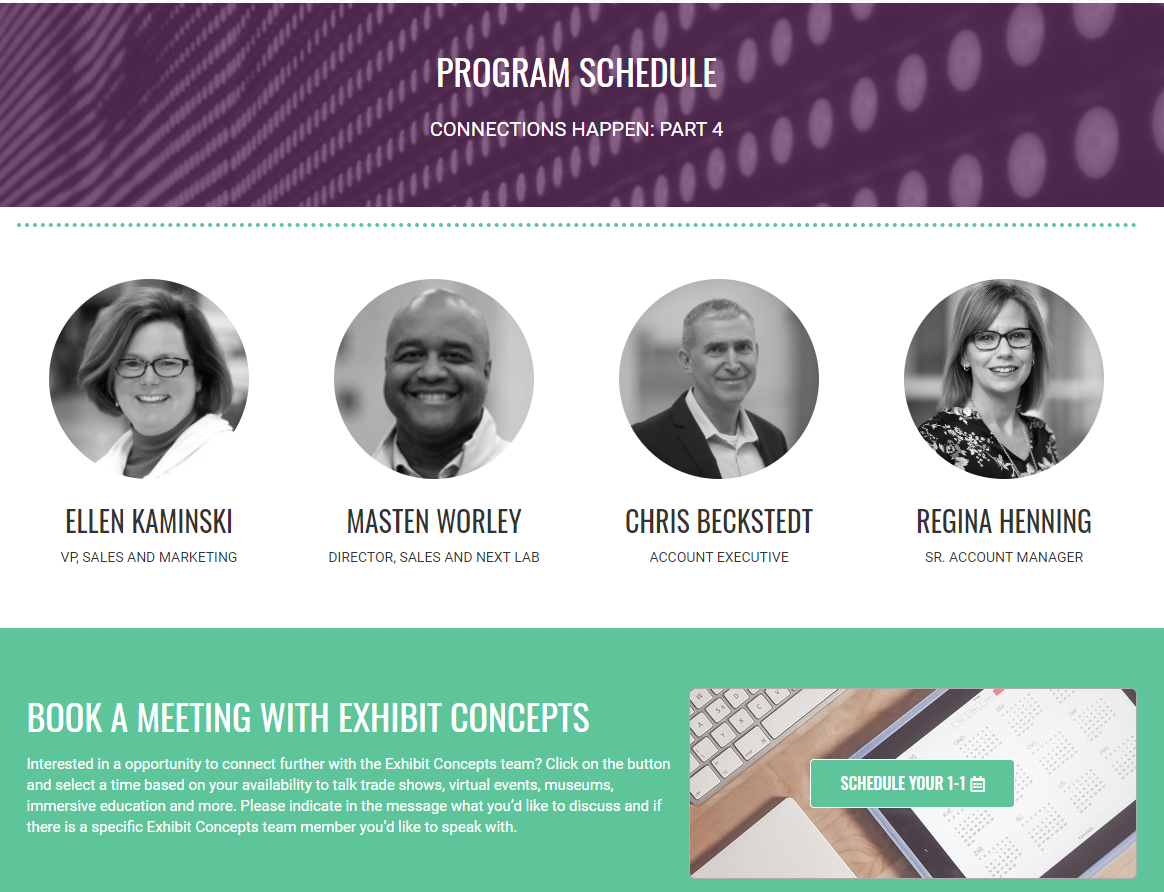
Proprietary Event
The convergence of a microsite and online seminar is the next level of virtual event. In this case, the microsite hosts the webinar and can include both static and dynamic bonus content. Attendees can view this extra content on-demand after the event, or during the session. These proprietary virtual events up the “event” ante. Your audience is invited to log into the event site at a specified time. Your sales and product teams are available for live Q&A. You can interact with your audience via polls and incorporate other engagement options. And if your content and audience warrants, you may have different speaker tracks with specific air times. These events often require a longer lead time, coordinating speakers, developing content and promoting the event to your audience.
Live Stream
Live streamed events are another option on the spectrum of virtual events. This format is well suited for events that have an element of surprise and spontaneity. For example, a company meeting with a question-and-answer segment planned or an employee award and recognition event. Having back-up and contingency plans are important for any kind of event, in person or virtual. And a live streamed event is no exception. A best practice is to schedule a dress rehearsal, testing all aspects, especially the technology. Recording the dress rehearsal fives you a back-up if all else fails.
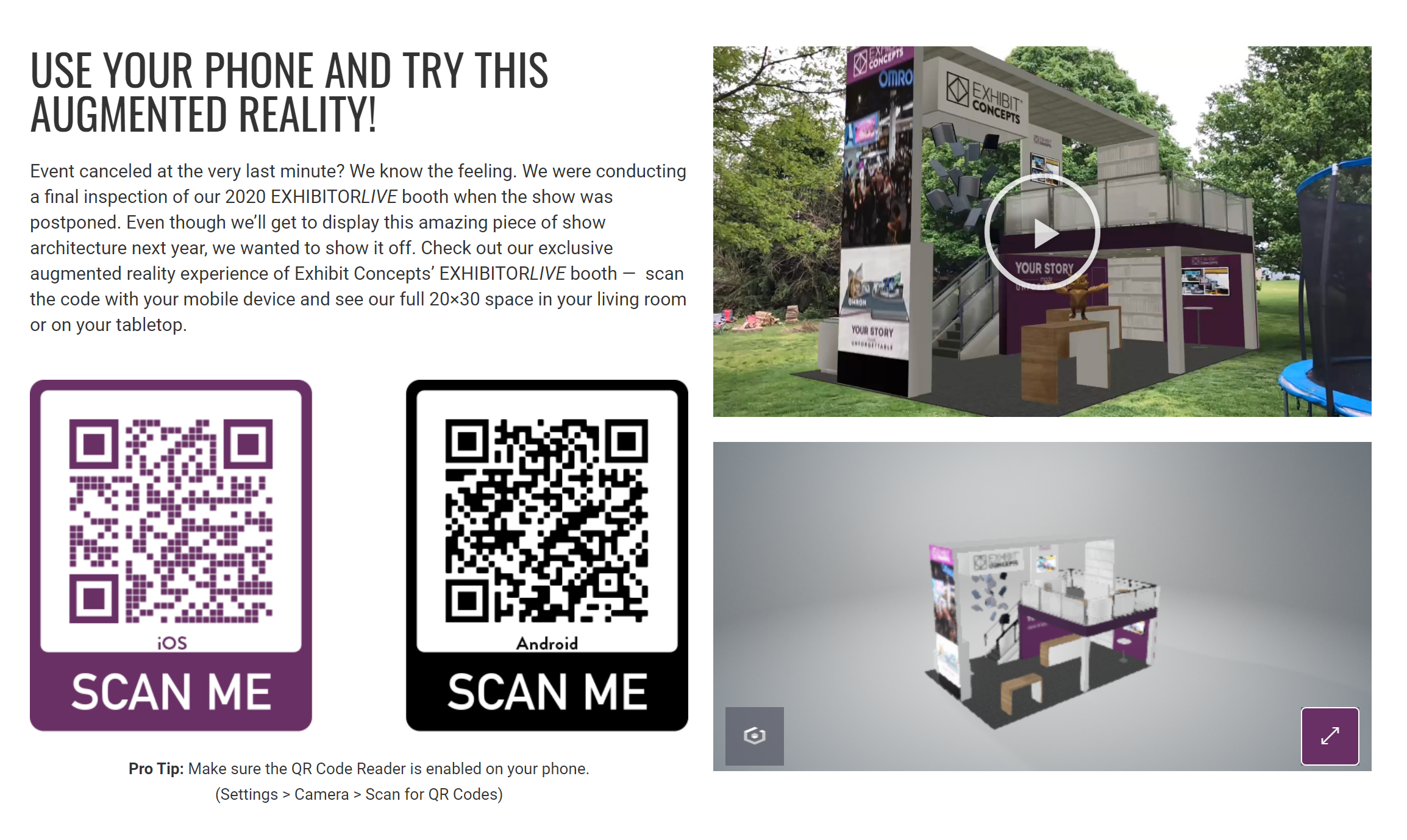
Virtual Tours & Product Demos
Virtual tours and product demonstration videos are the next level. These can either be actual video recordings of your facility or an animated 3D rendering of a “walk thru” or “fly thru” of the space. The tour can be self-guided where the viewer uses his/her mouse to maneuver through the space, a narrated video, or with an avatar tour guide. As you can imagine, length and digital complexity will determine the budget and timeline.
Virtual Trade Show
Virtual trade shows are an option that many show organizers have adopted over the past year as a way to bring important educational content to their audiences. In most cases, these are for fee, multi-day events, with content delivered via a digital event platform. Speakers may be live, or their sessions were pre-recorded and played live during the virtual conference. The virtual trade show component typically consists of exhibitors who have a 2D booth with static content and are available to chat with attendees. So far at least, virtual trade shows have been rated successful delivering the educational content but fall short on the networking and exhibit hall elements.
3D Experience
At the top end of the spectrum, in terms of experience, complexity, budget and timeline, is the fully immersive 3D virtual reality event. Imagine viewing a 3D rendering of a convention center, theater or other presentation space on your computer screen. Again, the options exist for a self-guided or guided experience. And you can experience the space and content in the first person, or you can watch someone else interact with the space, content and other attendee avatars. You are in the space and it can be as realistic as budget allows. And it goes without saying, these types of digital experiences require significant budgets.
Over the course of the last 20 years, there have been several times that virtual events and trade shows were in favor. The crises of 9/11 and the Great Recession resulted in corporate travel bans and other cost cutting measures. Despite the promise of virtual events, they never quite took hold. However, after more than a year of only digital and virtual events, the technology has advanced and our acceptance of these events has increased. Regardless of how virtual events plays into your marketing plans going forward, the good news is that there is an option that fits your objectives, timeline and budget.


